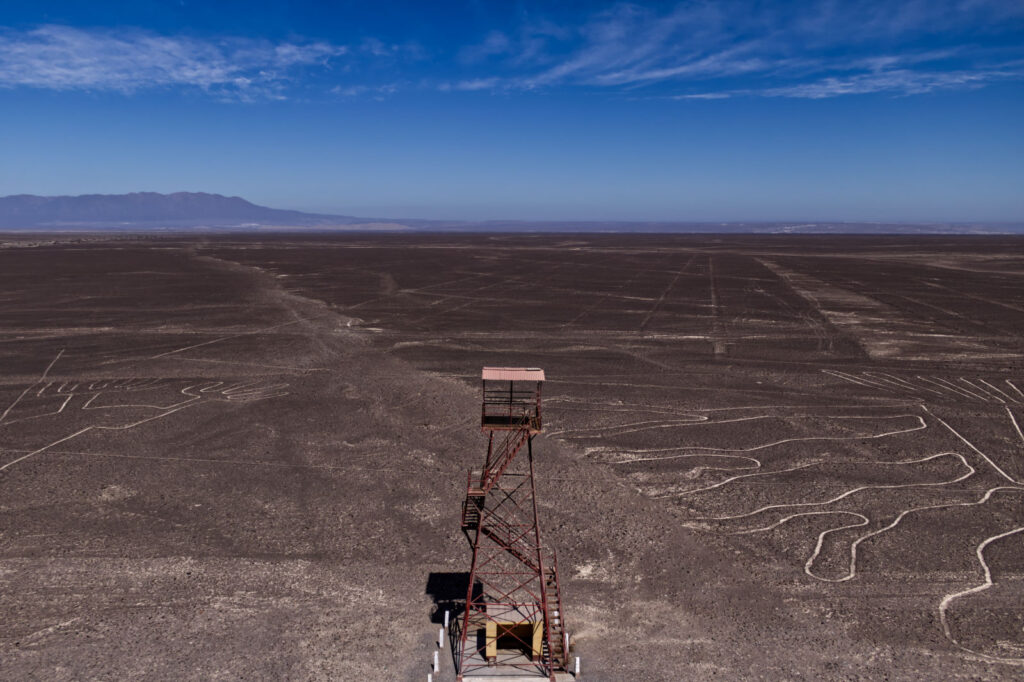
NAZCA: MYSTERY OF HISTORY
Nazca is a small town in southwestern Peru that, aside from a small museum, offers little of interest. However, the main attraction is not the town itself but the remarkable sites in its surroundings.
What is Nazca about…
Covering an area of approximately 450 km², hundreds of ancient geoglyphs, dated back as far as 2000 years, are etched into the desert floor. They form simple geometric lines as well as complex animals and creatures, some of which are over a hundred meters long. Their origin and purpose of those lines remain shrouded in mystery.
Nazcas’ Location
How did the lines survive for so long?
Lines were mainly preserved because Nazca is one of the driest places on Earth with the annual precipitation around 4 milimeters per year, with minimal erosion and wind.Those conditions allowed lines to keep their shape over 2 millennia.
About desert
Nazca Desert is an enigmatic landscape that has captivated the imagination of archaeologists, historians, and travelers alike. Far from the bustling tourist trails of Peru’s more famous landmarks, the Nazca Desert offers an experience of mystery, ancient ingenuity, and natural beauty. The surrounding hills and valleys provide a dramatic backdrop for sunrise and sunset, casting long shadows that bring the geoglyphs into sharper relief. The desert offers opportunities for hiking and discovering archaeological sites, including ancient aqueducts that highlight the Nazca people’s advanced engineering skills.
Highway Across the Lizard
The highway that crosses the Nazca Desert dramatically bisects the lizard geoglyph, an unfortunate scar on an ancient masterpiece.
About geoglyphs
The geoglyphs in Nazca, a series of vast, intricate designs etched into the desert floor, remain one of history’s most captivating and enigmatic wonders. In order to see the geoglyphs, one can visit an observation tower located near the highway, although only few nearby patterns can be seen from there, such as the spider or hands. To see more of intricate shapes, it is necessary to use the services of tourist agencies and take a flight, during which, you will see the most famous geoglyphs.
Created by Aliens?
Some people believe that famous Nazca Lines were created by aliens as giant landing strips for their spaceships, giving the term “alien runway” a whole new meaning!
New ones every day
In the vast expanse of the Nazca Desert, the ancient canvas of the Nazca Lines continues to unveil its secrets, with new glyphs being discovered periodically, much to the excitement of archaeologists and enthusiasts. Despite decades of study, the desert landscape still holds mysteries waiting to be uncovered, and the discovery of new geoglyphs adds another layer to our understanding of the ancient Nazca civilization.
Cranial Deformation
Through the binding of infants’ heads with tight wrappings, the Nazca people achieved distinctive cranial shapes, a practice that likely held cultural and social significance.
Nazca civilization
The ancient civilizations of Nazca flourished between 100 BCE and 800 CE, leaving behind a rich legacy of art, engineering, and culture. In addition to their remarkable artwork, the Nazca people were skilled engineers, constructing an extensive network of underground aqueducts known as puquios to harness water from underground sources and channel it to their agricultural fields. These innovative systems allowed the Nazca civilization to thrive in an otherwise arid environment, supporting a population estimated to have reached tens of thousands.
Conclusion
The Nazca Desert serves as a testament to the enduring power of human creativity and adaptation in the face of challenging environments. As we gaze upon the intricate geoglyphs etched into the desert floor amidst the shifting sands of time, pause for a while and listen, and you will hear the echoes of the ancient voices still resonating.



